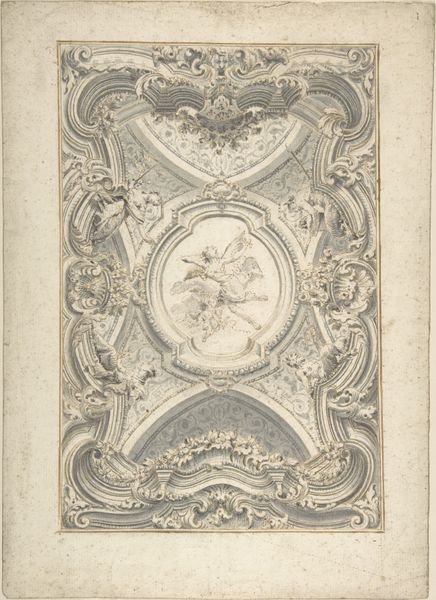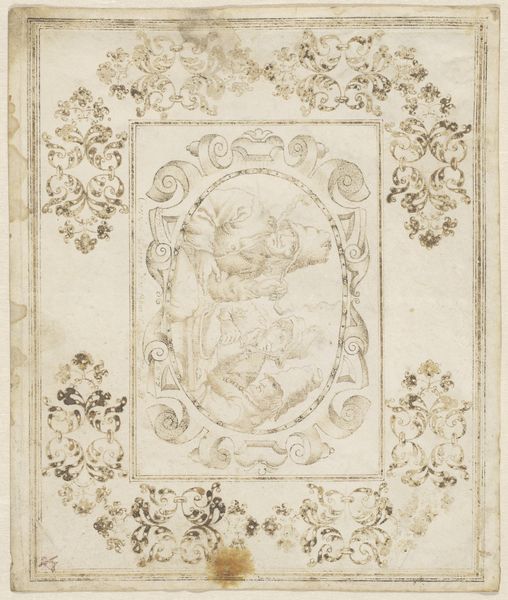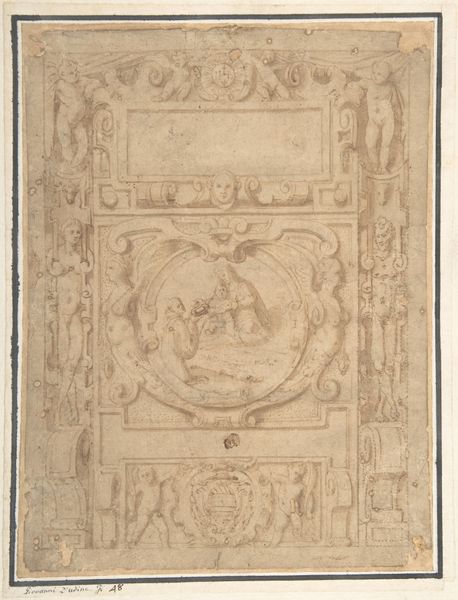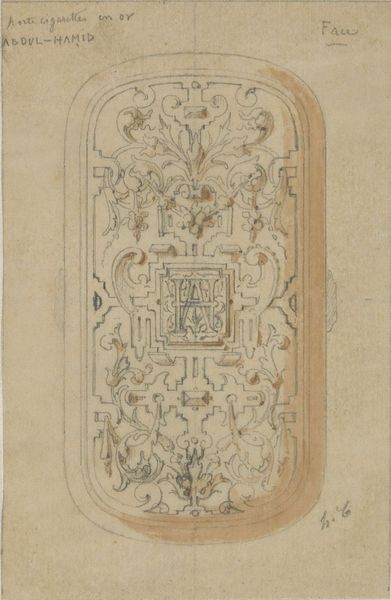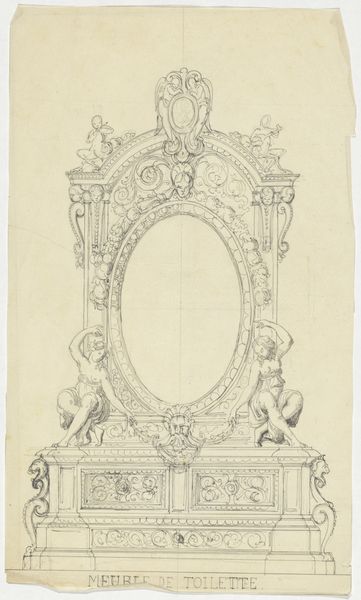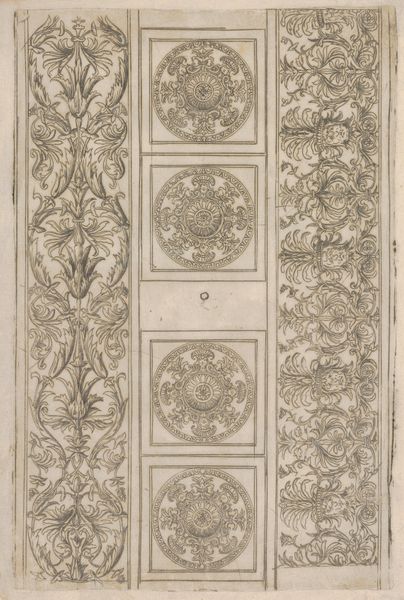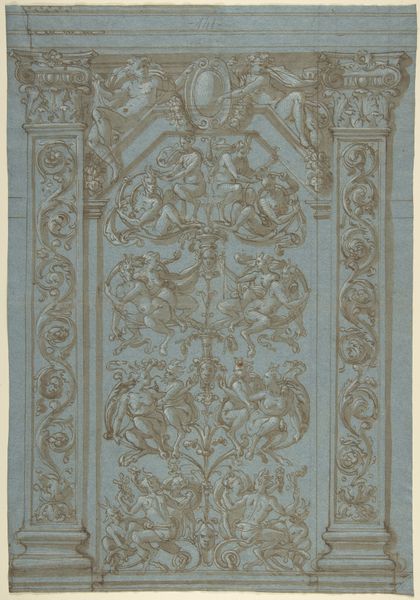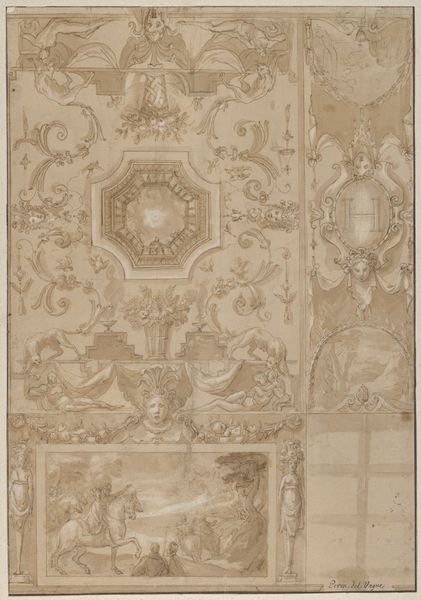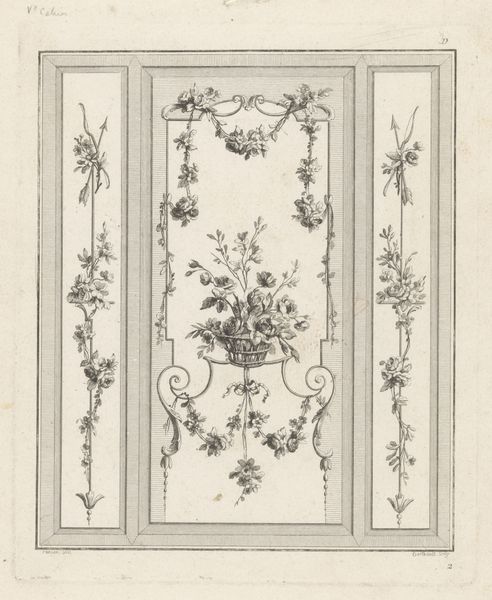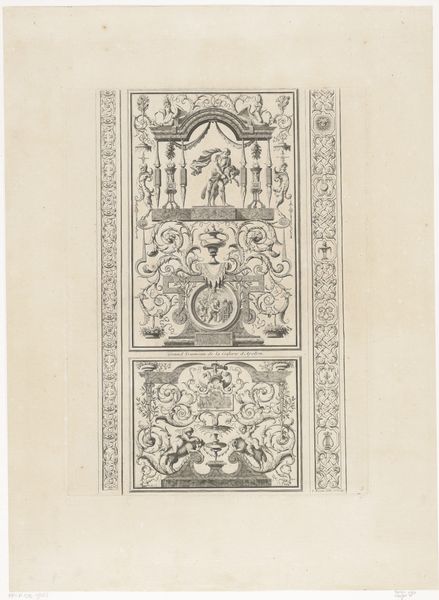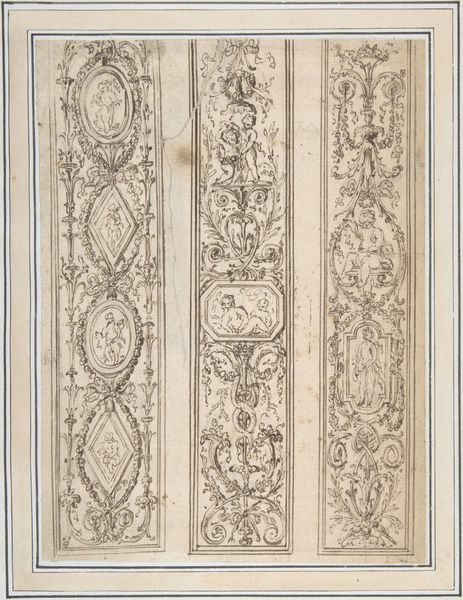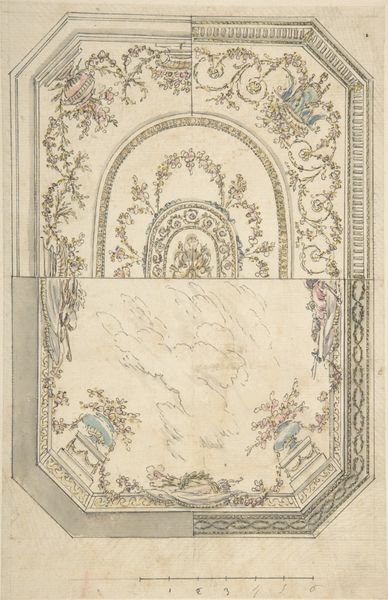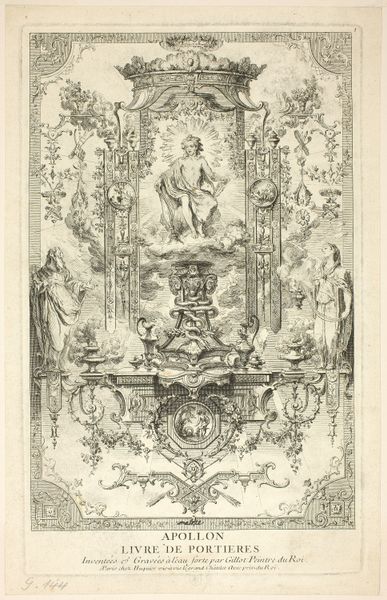
Dimensions: height 432 mm, width 250 mm
Copyright: Rijks Museum: Open Domain
Editor: This is Alexandre Eugène Prignot’s "Decoratief paneel" from 1872. It’s a pencil drawing that gives the impression of a relief. All the ornamentation is so precise and delicately rendered, that the drawing feels like an exploration of pure form. How would you approach analyzing its composition? Curator: Formally, the drawing demonstrates a clear hierarchical arrangement. Notice the centrality of the oval containing the human figure, surrounded by increasingly elaborate ornamentation. The visual weight is distributed unevenly, directing our eyes towards that central figure. How does the artist achieve this effect through line and shape? Editor: The linework around the central oval is much bolder, providing contrast with the softer lines elsewhere, and that draws your eye immediately. And the geometry too - the central oval against the rectangles in the rest of the design seems significant. Curator: Precisely. This manipulation of line and shape isolates the figure. Note also the calculated repetition of decorative motifs - the palmettes, the floral garlands - contributing to a cohesive whole, governed by symmetry. Consider how this meticulous arrangement shapes the viewer’s experience. Editor: I see how the repeated forms establish balance, even while directing the viewer's attention toward the center of the work. The entire panel is neatly organized around that isolated oval. What I had initially missed are the other underlying geometric structures which further guide the eye across the entire surface of the panel. Curator: It is in these formal relationships where the power of the image resides. By understanding the interplay between line, shape, and spatial arrangement, one can grasp the intended effect, whether harmony, tension, or something else entirely. And from there one can decode something greater. Editor: Thanks, by paying more attention to line and geometric patterns, I've come to see there's so much to decode beyond initial impression.
Comments
No comments
Be the first to comment and join the conversation on the ultimate creative platform.
